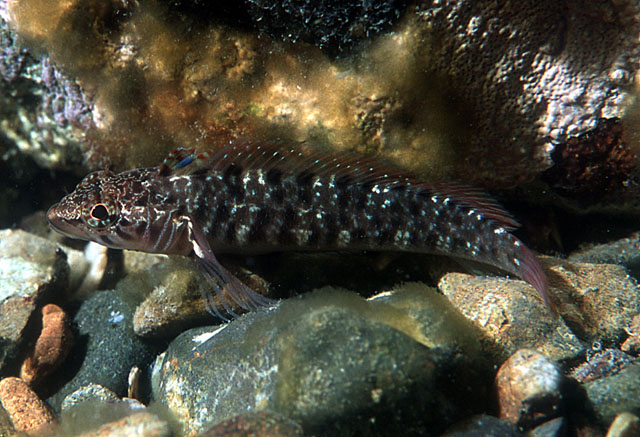| Tripterygiidae (Triplefin blennies), subfamily: Tripterygiinae |
| 12 cm TL (male/unsexed) |
|
demersal; marine; depth range 0 - 6 m |
| Southwest Pacific: around mainland New Zealand. |
|
Dorsal spines (total): 20-23; Dorsal soft rays (total): 14-16; Anal spines: 2-2; Anal soft rays: 24-27. Males uniform grey to black with red fins and a bluish white margin to the anal fin during the breeding season. Females mottled greenish grey with an indistinct broken dark band along the base of the dorsal fins. Distinguished from other triplefins by the flattened pointed head and snout, the short, square caudal peduncle, and by having three spines in the first dorsal fin and 14-16 spines in the second. |
| Adults are commonly found in sheltered areas shallower than 5 m. Typical in shallow habitats in coastal mainland areas and seldom on offshore islands. Mainly found under rocks. They feed on a range of benthic invertebrates including ophiuroids, archaeogastropods, trichoptera and errant polychaetes (Ref. 84084). Eggs are hemispherical and covered with numerous sticky threads that anchor them in the algae on the nesting sites (Ref. 240). Larvae are planktonic which occur primarily in shallow, nearshore waters (Ref. 94114). They are caught by slurp guns and handnets (Ref. 84086). |
|
Least Concern (LC); Date assessed: 06 May 2010 Ref. (130435)
|
| harmless |
Source and more info: www.fishbase.org. For personal, classroom, and other internal use only. Not for publication.

